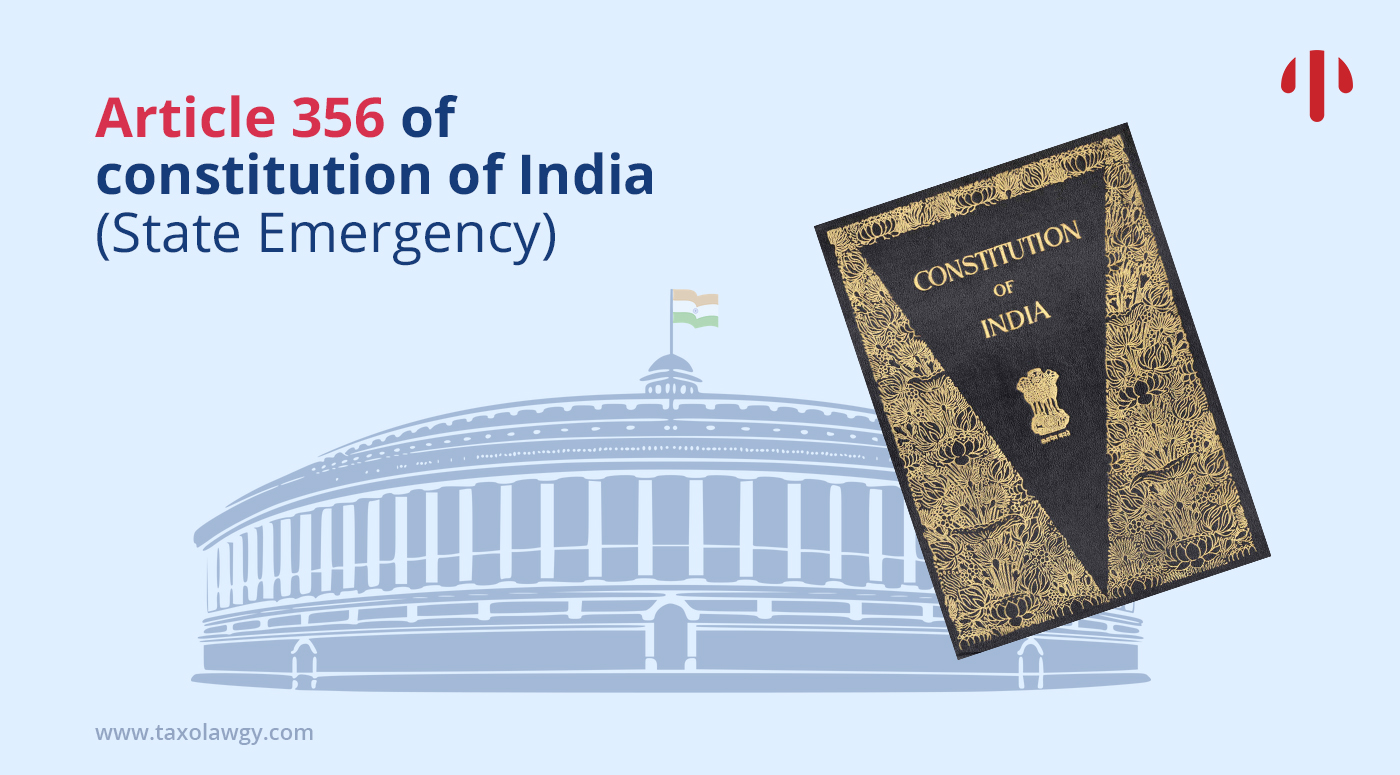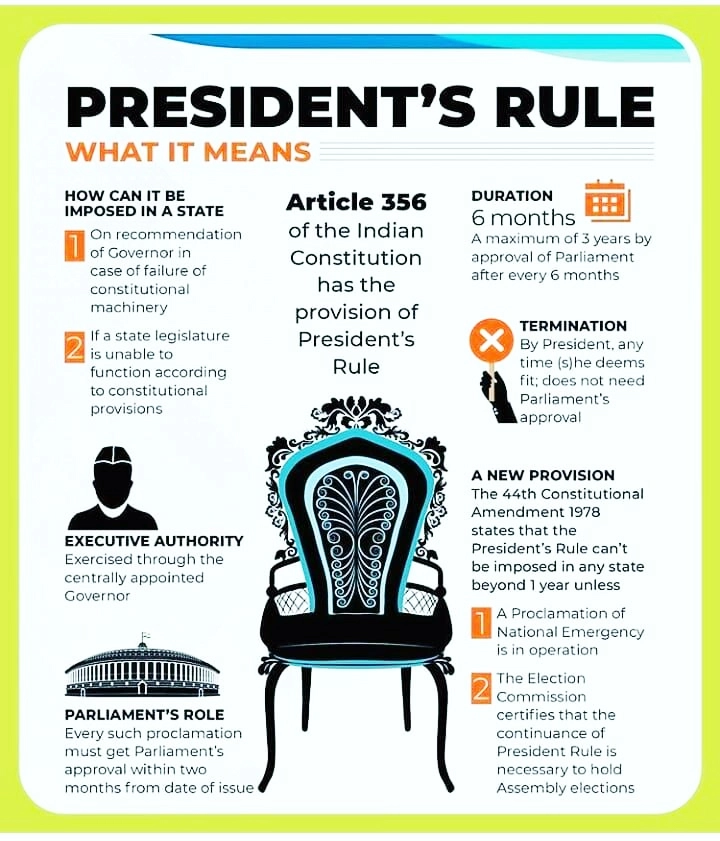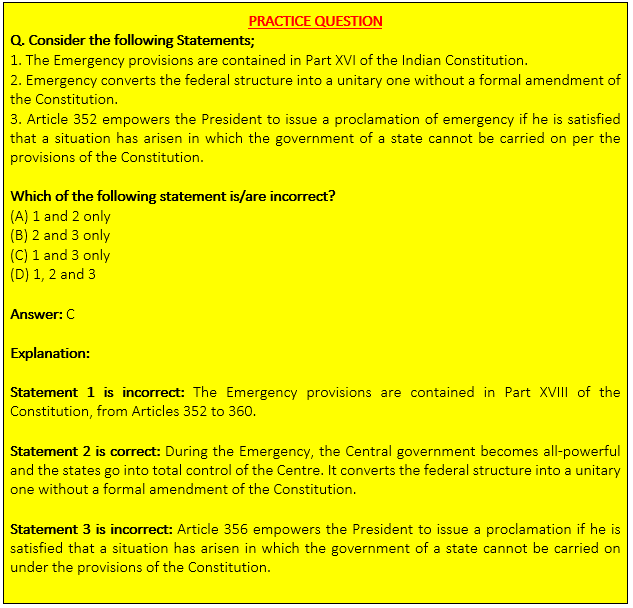Free Courses Sale ends Soon, Get It Now


Free Courses Sale ends Soon, Get It Now



Copyright infringement not intended
In News:
Emergency Provisions in the Indian Constitution:
The Constitution prescribed three types of emergencies:
President’s Rule:

Origins of Article 356
Article 356 of the Indian Constitution
Application of Article 356 in Independent India
Supreme Court Verdict to curb misuse of Article 356

© 2024 iasgyan. All right reserved